A GEORGE III SILVER SPOUTED EWER AND COVER, PAUL STORR FOR RUNDELL, BRIDGE & RUNDELL, LONDON, 1810 in the form of an Antique oinochoe, the otherwise plain body engraved on one side with a crest, applied with two bearded masks in sizes, one below the scroll handle, the other below the short curved spout, gadroon borders, plain bun knop to the detachable cover, gilt interior 18.5cm high, 986gr (31oz 14dwt) Provenance: The Collection of J. Anderson Rose; The Collection of Charles Chichele Oman (1901-1982), thence by descent. Charles Oman (1901-1982) is a name which is familiar to most collectors of old silver, partly because of his position and influence as Keeper of Metalwork at the Victoria and Albert Museum from 1945 until 1966 and partly because of his books and numerous articles on the subject. His English Domestic Silver was published in 1933, which was followed by English Church Plate (1957), The English Silver in the Kremlin, 1557-1663 (1961), Caroline Silver, 1625-1688 (1971) and English Engraved Silver, 1150-1900 (1978). These standard works are accompanied by various articles which demonstrated the breadth of Oman's knowledge and interests, including the ground-breaking Apollo article of 1966, 'A Problem of Artistic Responsibility' in which he explored the contribution made by William Theed the elder, John Flaxman E.H. Baily and other artists in the success of the royal goldsmiths, Rundell, Bridge & Rundell's plateworking activities. Beyond the relatively narrow world of antique silver scholarship, Oman was also known for his deep knowledge of English historic buildings and cathedrals. Early in his career at the Victoria and Albert Museum, which he joined in 1924 as an assistant keeper in the department now known as Prints and Drawings, he researched and wrote a catalogue of the museum's collection of early wallpapers, published in 1929. This jug, formerly one of a pair, was shown with its companion at 'The Fine Art Exhibition of the Worshipful Company of Cordwainers' at no. 7, Cannon Street, City of London during April and May 1890. Admission was one shilling and the proceeds raised were 'applied to the FUND for the RELIEF of the SURVIVORS of the BALACLAVA CHARGE.' The exhibition, which brought together a wide range of pictures and works of art, all contributed by members of the Company, including old English pottery and Greek and Etruscan vases sent by Sir Henry Doulton. By far the largest group of paintings and objects exhibited belonged to the then Master of the Cordwainers' Company, James Anderson Rose (1820-1890), great-uncle of Charles Oman, the well-known authority on antique silver, to whom this jug descended. Rose, a lawyer, was a familiar figure in creative circles, being solicitor to Whistler, Rosetti and many other artists of the Victorian period. According to the Cordwainers' 1890 exhibition catalogue, this jug and its pair, described as coffee pots, were of 'Etruscan shape. Head of Jupiter on handles, designed by John Flaxman, R.A. for the Prince Regent and formerly in his possession.' This is quoted by N.M. Penzer in his book, Paul Storr Last of the Goldsmiths (London, 1954, p. 142, pl. XXXII), who states that the design of the jugs was based on Roman originals (urceus and lagona), which, he says, have been discovered as far apart as Kent and Pompeii. No exact ancient parallel has been found, however, indicating that the pattern was based on an invention by one of Rundell, Bridge & Rundell's resident artists, the most likely candidate being William Theed (1764-1817). Other, similar jugs of oinochoe form and applied with the same masks, maker's mark of Paul Storr for Rundell's, London, 1812, have been recorded, including one from the collection of the Marquess of Ormonde, an important patron of Rundell, Bridge & Rundell (Christie's, New York, 19 October 2010, lot 114). It should be noted that these examples do not represent Paul Storr's earliest essays in 'pure' classical form. A silver jug in the shap
A GEORGE III SILVER SPOUTED EWER AND COVER, PAUL STORR FOR RUNDELL, BRIDGE & RUNDELL, LONDON, 1810 in the form of an Antique oinochoe, the otherwise plain body engraved on one side with a crest, applied with two bearded masks in sizes, one below the scroll handle, the other below the short curved spout, gadroon borders, plain bun knop to the detachable cover, gilt interior 18.5cm high, 986gr (31oz 14dwt) Provenance: The Collection of J. Anderson Rose; The Collection of Charles Chichele Oman (1901-1982), thence by descent. Charles Oman (1901-1982) is a name which is familiar to most collectors of old silver, partly because of his position and influence as Keeper of Metalwork at the Victoria and Albert Museum from 1945 until 1966 and partly because of his books and numerous articles on the subject. His English Domestic Silver was published in 1933, which was followed by English Church Plate (1957), The English Silver in the Kremlin, 1557-1663 (1961), Caroline Silver, 1625-1688 (1971) and English Engraved Silver, 1150-1900 (1978). These standard works are accompanied by various articles which demonstrated the breadth of Oman's knowledge and interests, including the ground-breaking Apollo article of 1966, 'A Problem of Artistic Responsibility' in which he explored the contribution made by William Theed the elder, John Flaxman E.H. Baily and other artists in the success of the royal goldsmiths, Rundell, Bridge & Rundell's plateworking activities. Beyond the relatively narrow world of antique silver scholarship, Oman was also known for his deep knowledge of English historic buildings and cathedrals. Early in his career at the Victoria and Albert Museum, which he joined in 1924 as an assistant keeper in the department now known as Prints and Drawings, he researched and wrote a catalogue of the museum's collection of early wallpapers, published in 1929. This jug, formerly one of a pair, was shown with its companion at 'The Fine Art Exhibition of the Worshipful Company of Cordwainers' at no. 7, Cannon Street, City of London during April and May 1890. Admission was one shilling and the proceeds raised were 'applied to the FUND for the RELIEF of the SURVIVORS of the BALACLAVA CHARGE.' The exhibition, which brought together a wide range of pictures and works of art, all contributed by members of the Company, including old English pottery and Greek and Etruscan vases sent by Sir Henry Doulton. By far the largest group of paintings and objects exhibited belonged to the then Master of the Cordwainers' Company, James Anderson Rose (1820-1890), great-uncle of Charles Oman, the well-known authority on antique silver, to whom this jug descended. Rose, a lawyer, was a familiar figure in creative circles, being solicitor to Whistler, Rosetti and many other artists of the Victorian period. According to the Cordwainers' 1890 exhibition catalogue, this jug and its pair, described as coffee pots, were of 'Etruscan shape. Head of Jupiter on handles, designed by John Flaxman, R.A. for the Prince Regent and formerly in his possession.' This is quoted by N.M. Penzer in his book, Paul Storr Last of the Goldsmiths (London, 1954, p. 142, pl. XXXII), who states that the design of the jugs was based on Roman originals (urceus and lagona), which, he says, have been discovered as far apart as Kent and Pompeii. No exact ancient parallel has been found, however, indicating that the pattern was based on an invention by one of Rundell, Bridge & Rundell's resident artists, the most likely candidate being William Theed (1764-1817). Other, similar jugs of oinochoe form and applied with the same masks, maker's mark of Paul Storr for Rundell's, London, 1812, have been recorded, including one from the collection of the Marquess of Ormonde, an important patron of Rundell, Bridge & Rundell (Christie's, New York, 19 October 2010, lot 114). It should be noted that these examples do not represent Paul Storr's earliest essays in 'pure' classical form. A silver jug in the shap
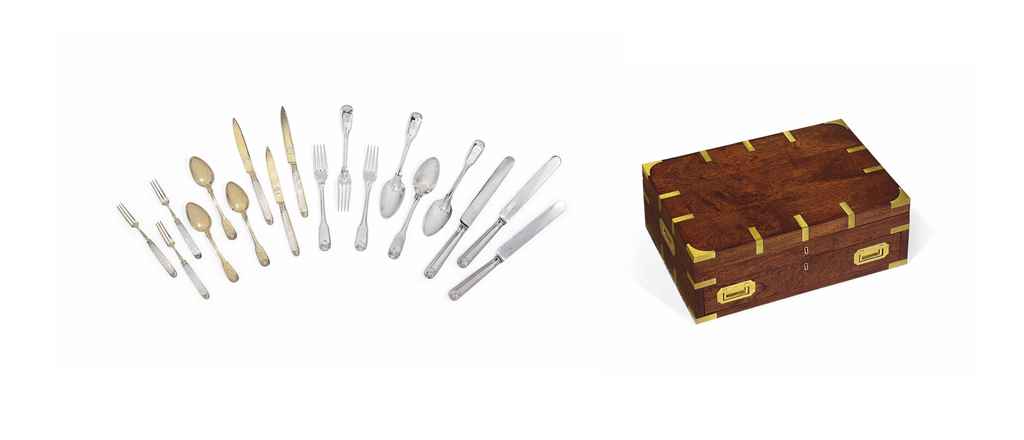
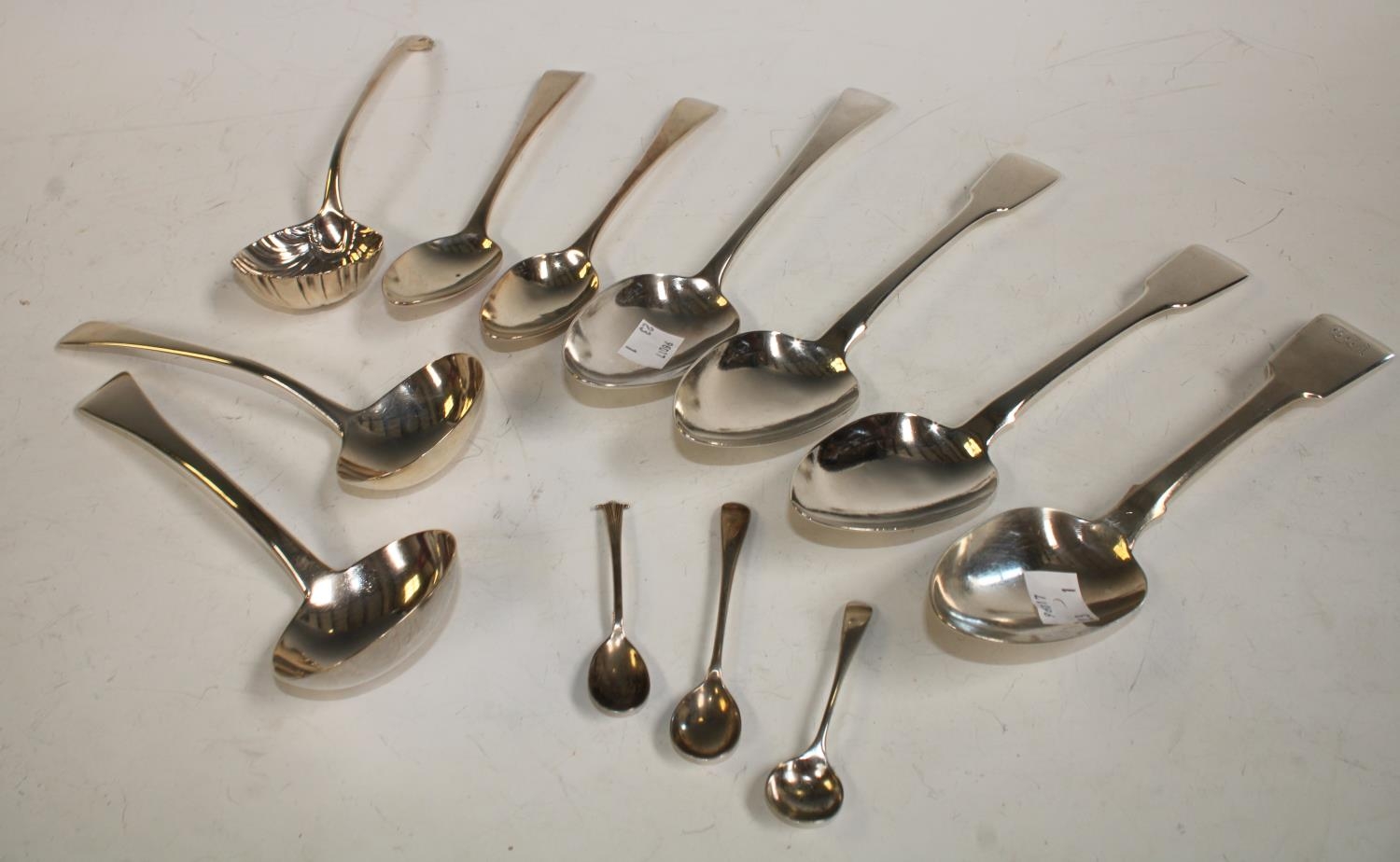

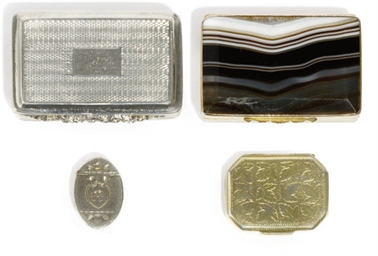
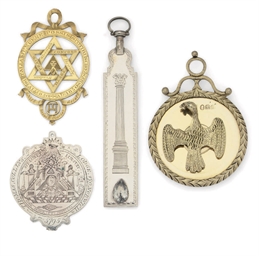
.jpg)
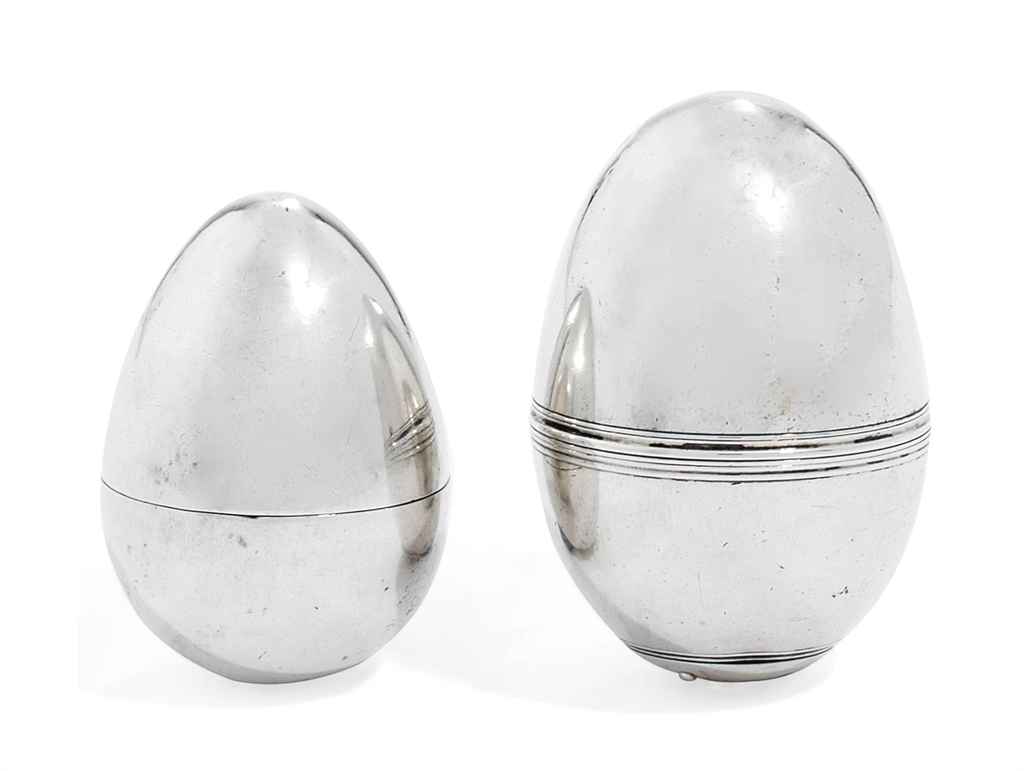
.jpg)
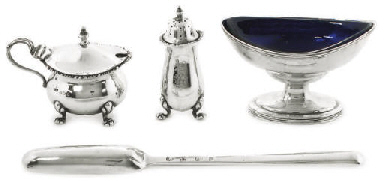

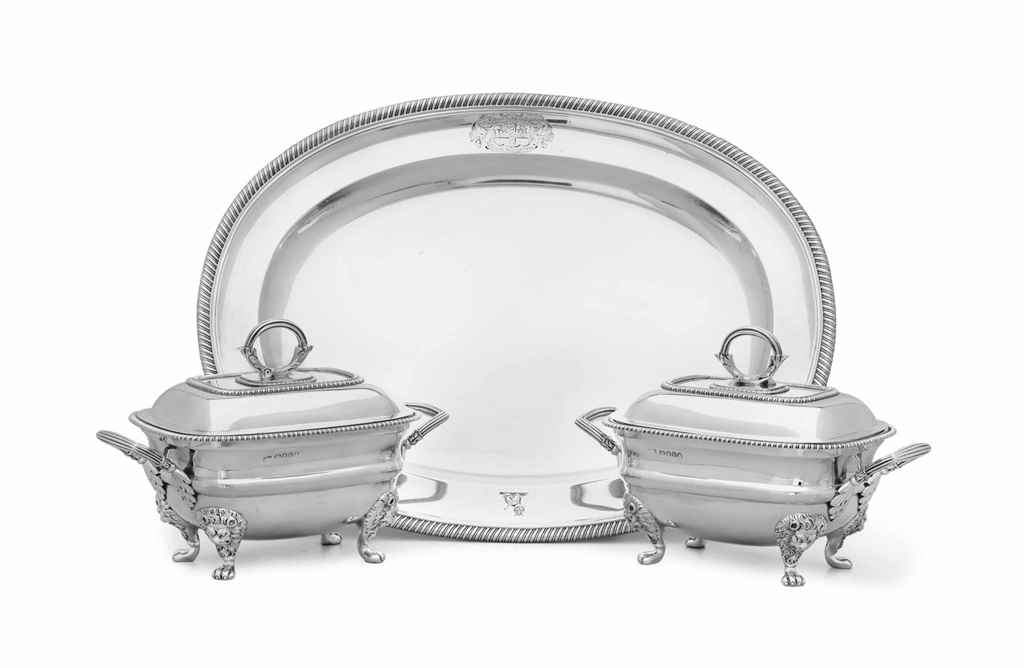
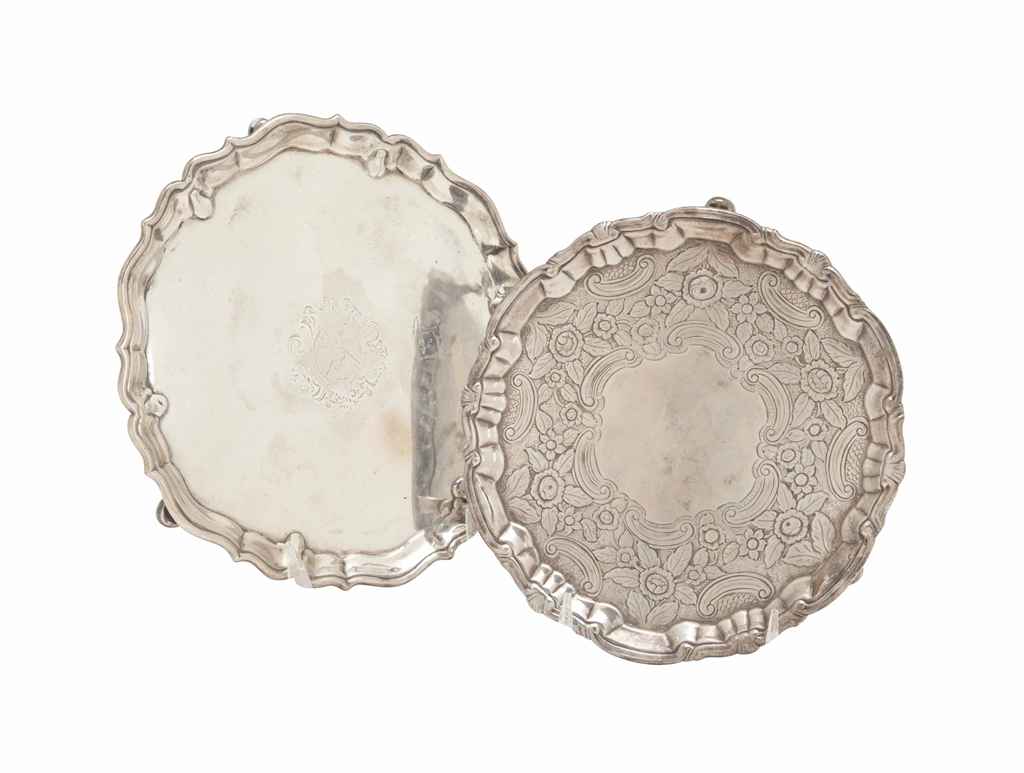
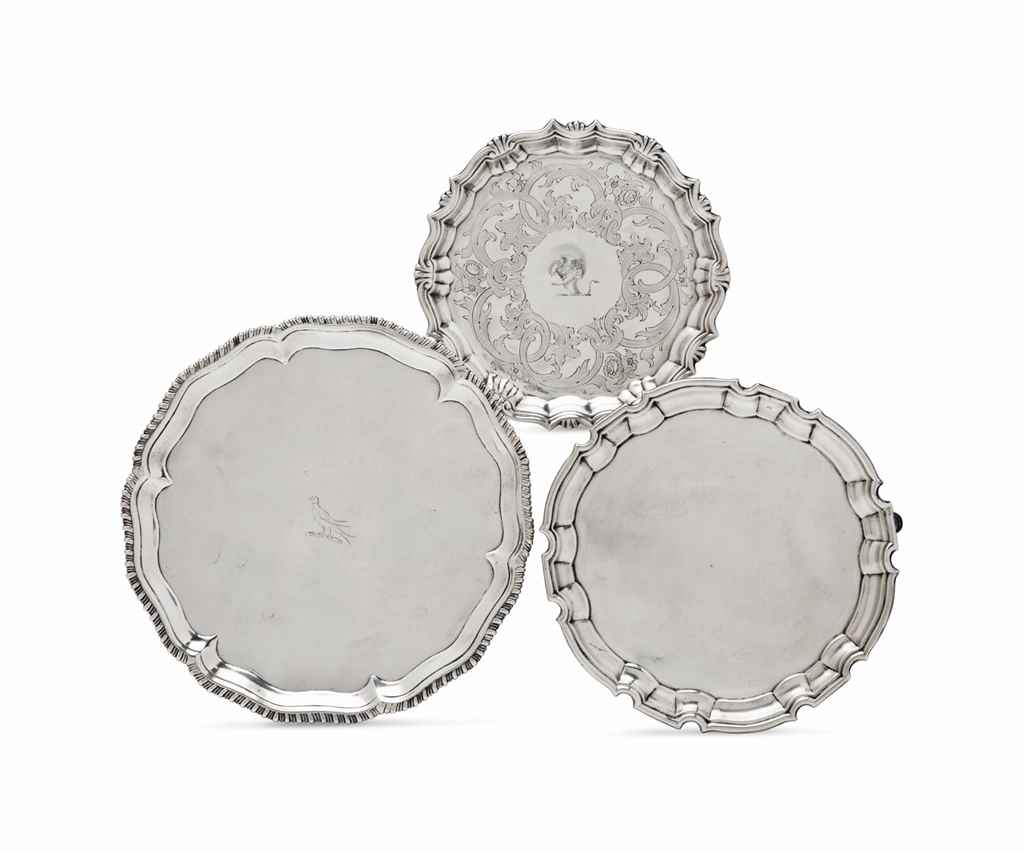


Testen Sie LotSearch und seine Premium-Features 7 Tage - ohne Kosten!
Lassen Sie sich automatisch über neue Objekte in kommenden Auktionen benachrichtigen.
Suchauftrag anlegen